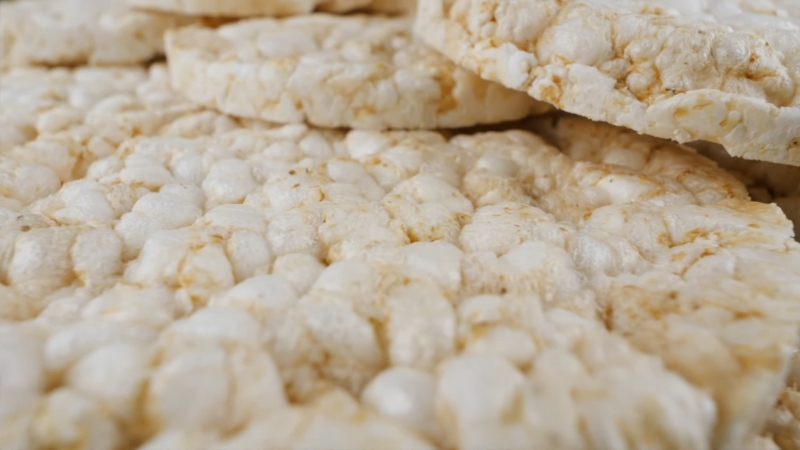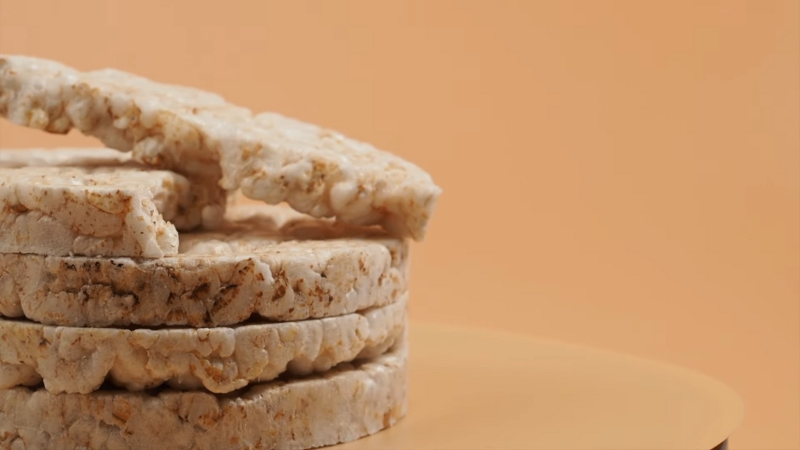Rice cakes have a clean, simple image – light, crunchy, and often marketed as the perfect low-calorie snack.
You’ll see them in lunchboxes, gym bags, and diet plans everywhere. But behind that crisp simplicity, there’s a question worth asking: are rice cakes actually healthy, or just cleverly marketed air?
To answer that properly, we need to look at how they’re made, what nutrients they actually provide, how they affect your blood sugar, and when they can fit into a balanced diet. The truth is: rice cakes aren’t inherently bad – but they’re not a “superfood” either.
They can be a useful snack in some situations, and an empty one in others. It all depends on what you eat them with and what your body needs.
Nutrition Profile – The Good, the Bad, and the Missing
Let’s break down what’s actually inside a standard plain rice cake (about 9 grams):
Nutrient
Amount (per rice cake)
What It Means
Calories
35–40 kcal
Very low – makes portion control easier
Carbohydrates
7–8 g
Mostly starch, quick energy, but not slow-burning
Protein
0.7 g
Minimal – not enough to sustain satiety
Fat
0 g
Virtually none unless flavored
Fiber
0–0.5 g
Very low – not ideal for digestion
Sodium
0–40 mg
Low unless salted or flavored
Micronutrients
Trace manganese, magnesium
Depends on rice variety
So while rice cakes are low in calories, they’re also low in nutrients. Think of them as a blank canvas – not harmful, but not nourishing on their own.
Are They Good for Weight Loss?

This is where rice cakes get both their popularity and their criticism. They’re often promoted as a diet-friendly food because of their low calorie count and fat-free label.
But the reality is more complicated:
- They digest quickly, which means they don’t keep you full. You may end up hungry again within an hour.
- Because they’re made mostly of refined rice, they have a high glycemic index (GI) – around 70–80. Foods with a high GI cause quick rises in blood sugar followed by drops that trigger hunger or cravings.
- If you eat them with no protein, fat, or fiber, you’re essentially just eating fast carbs.
That doesn’t mean you have to avoid them. You just need to pair them smartly.
The Smart Way to Eat Rice Cakes
Dietitians often describe rice cakes as a “delivery system” – a base for something more nutritious. Here’s how you can turn them from fluff into fuel:
Goal
Healthy Topping Combo
Why It Works
Weight management
Almond butter + banana slices
Adds fiber, protein, and slow-digesting carbs
High-protein snack
Cottage cheese + cucumber + pepper
Adds sustained energy and hydration
Post-workout refuel
Rice cake + peanut butter + drizzle of honey
Quick carbs with protein and natural sugar
Vegan balanced snack
Avocado mash + sesame seeds + lime
Adds healthy fats and micronutrients
Sweet craving fix
Greek yogurt + berries + cinnamon
Provides protein and antioxidants
By pairing rice cakes with protein (nut butter, yogurt, cheese) and fiber (fruit, seeds, vegetables), you can balance out their fast-absorbing carbs and avoid sugar crashes.
Whole Grain vs. Refined Rice Cakes
Not all rice cakes are created equal. Many are made from white rice, which has been stripped of the bran and germ – the parts containing most of the fiber and nutrients.
If you’re choosing rice cakes regularly, opt for whole-grain or brown rice versions. They tend to have:
- More fiber (about 1–2 grams per serving)
- Slightly more protein
- A nuttier, deeper flavor
- A lower glycemic index
Look for labels that say “100% brown rice” or “whole grain”. You might also find versions made from black rice, quinoa, or wild rice – these offer extra minerals and antioxidants.
Are Flavored Rice Cakes Healthy?
View this post on Instagram
This is where marketing can get tricky. Flavored rice cakes often contain added sugar, artificial flavoring, or excess sodium. For example:
- “Caramel” or “chocolate” rice cakes can have up to 4–6 grams of sugar per piece.
- “Cheddar” or “ranch” versions often pack over 150 mg of sodium each.
While that doesn’t sound huge, a few servings can add up quickly – especially if you’re eating them as a “healthy” snack.
If you like flavored varieties, treat them as a treat, not a staple. A good rule of thumb: if it tastes like dessert or chips, it’s nutritionally closer to them than to plain rice.
Are They Gluten-Free?
Yes – most rice cakes are naturally gluten-free since rice itself doesn’t contain gluten.
But if you have celiac disease or gluten sensitivity, always check the label for cross-contamination warnings. Some brands make rice cakes in facilities that also process wheat.
For strict gluten-free diets, look for certified gluten-free labels from trusted brands like Lundberg, Quaker (gluten-free line), or Suzie’s Thin Cakes.
How They Compare to Other Snacks
Snack
Calories
Fiber
Protein
Glycemic Index
Satiety Level
Rice Cake (plain)
35
0.3 g
0.7 g
80
Low
Whole Grain Cracker
70
1.5 g
1.5 g
55
Medium
Popcorn (air-popped, 2 cups)
60
2 g
1 g
65
Medium
Apple with Skin
95
4 g
0.5 g
40
High
Greek Yogurt (½ cup)
60
0 g
6 g
35
High
Rice cakes rank low for satiety, meaning they don’t keep you full as long as fiber- or protein-rich snacks.
However, when you pair them well (e.g., rice cake + almond butter), they move into the “medium” satiety range – making them a decent option for light snacking.
Blood Sugar and Energy: The Glycemic Impact

For people with diabetes or insulin resistance, rice cakes can be tricky. Because they’re made of puffed rice, they have a very high glycemic index – higher than even white bread in some tests.
That means they cause rapid spikes in blood glucose, which drop quickly afterward.
To offset that:
- Add fat or protein to your rice cake topping (like avocado or nut butter).
- Eat them after a main meal, not on an empty stomach.
- Choose whole-grain versions to slow absorption.
Think of rice cakes as something to balance, not rely on for steady energy.
The Psychological Side of “Healthy Snacks”
Rice cakes have long been a symbol of dieting culture – the kind of food you eat because you “should,” not because you want to. That can backfire.
If you rely on rice cakes as your main snack, you might end up unsatisfied and overeat later. Dietitians often stress that satiety matters just as much as calories. If a food doesn’t make you feel satisfied, it’s not truly serving your health goals.
So while rice cakes can play a role in a healthy eating plan, they should be part of a larger, enjoyable mix – not a punishment food.
When Rice Cakes Can Be a Good Choice
- You need a light pre-workout snack that won’t sit heavy in your stomach.
- You want a gluten-free base for spreads, cheeses, or hummus.
- You’re traveling and need a shelf-stable option that won’t spoil.
- You want crunch without grease – as a chip alternative.
Used this way, rice cakes are practical, portable, and customizable. They just shouldn’t replace nutrient-dense snacks entirely.
Bottom Line
@tonichealth Low Calorie Rice Cakes Are Often Deemed As Healthy… Once you take a closer look at the ingredients list and sugar content you might want to give these a miss🫣👀 #ricecake #lowcal #healthy #food #shopping #uk #lowcalorie #caloriecounting #sugar #protein #chocolatericecake #marmite ♬ original sound – Tonichealth
So, are rice cakes healthy? They’re not unhealthy – they’re incomplete.
They offer a quick, low-calorie crunch and can fit nicely into a balanced diet when paired with protein, fat, and fiber. But by themselves, they’re closer to neutral filler than nourishment.
Hi there, my name is Kelly Barlow and kellytoeat.com is my blog. Here, I write about various recipes I want to reccommend to readers.
I try to find the best possible recipes that can attract the attention of readers, and at the same time, I strive to write it in the most engaging manner possible.
When I was younger, I wanted to become a chef. Sadly, it wasn’t meant to be, but at the very least, I write about it.
